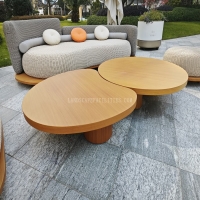Welcome to the website for landscape facilities products and knowledge.
How does the bin’s design prevent the entry of rainwater or other external contaminants?
Modern waste bins are engineered with advanced features to prevent rainwater and external contaminants from entering, ensuring hygiene and functionality. Key design elements include:
1. Sealed or Tight-Fitting Lids: Many bins feature hinged or snap-on lids that create a water-resistant barrier when closed. These lids often include rubber gaskets or overlapping edges to block moisture and debris.
2. Sloped Surfaces: Bins designed for outdoor use often have sloped tops or angled openings to direct rainwater away from the interior, preventing pooling or seepage.
3. Drainage Holes: Some models incorporate small drainage holes at the base to allow trapped water to escape without compromising the bin’s structural integrity.
4. Elevated Bases: Bins with raised bottoms reduce contact with ground moisture, minimizing the risk of contamination from splashes or flooding.
5. Material Selection: Durable, waterproof materials like high-density polyethylene (HDPE) or coated metal resist corrosion and leakage, further enhancing protection.
These design innovations ensure bins remain clean, dry, and efficient, even in harsh weather conditions.
Related search:

Recommendation
Elliptical metal outdoor table with nested design, resembling wood grain, round table